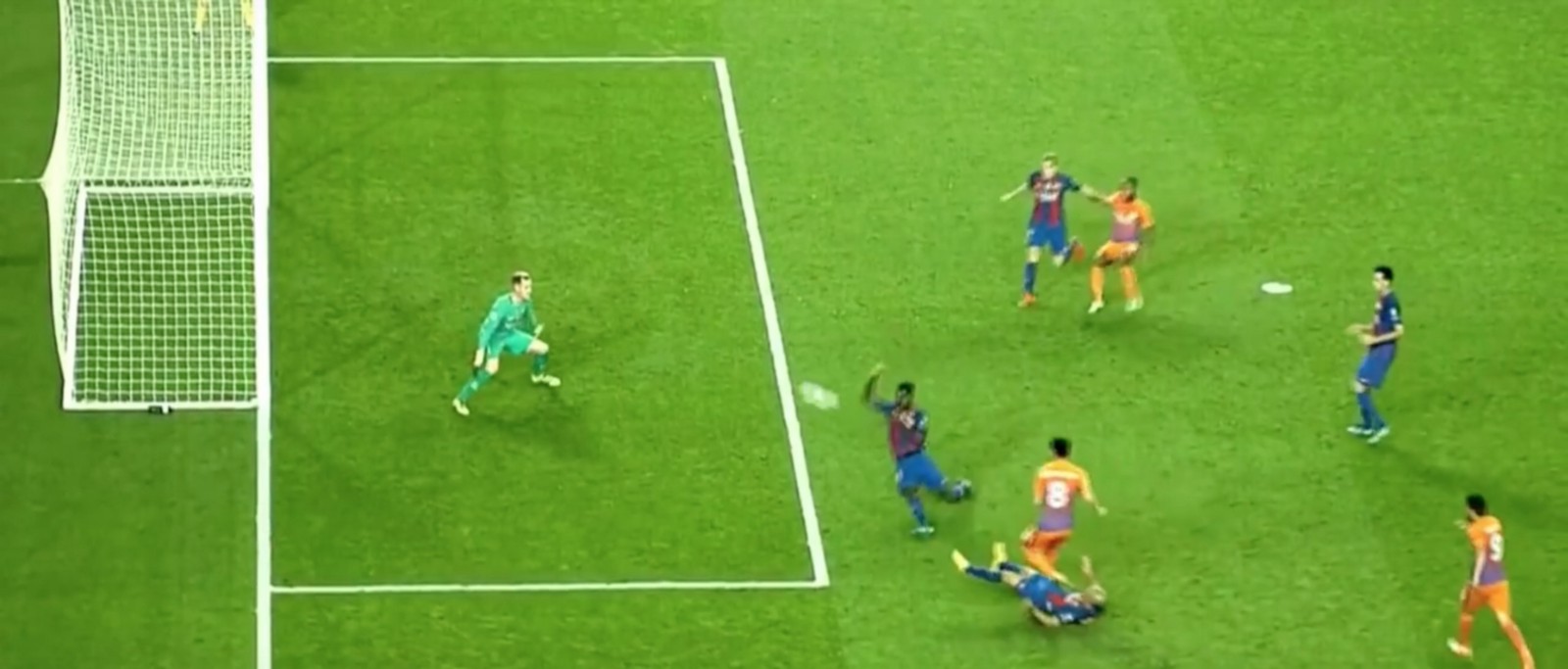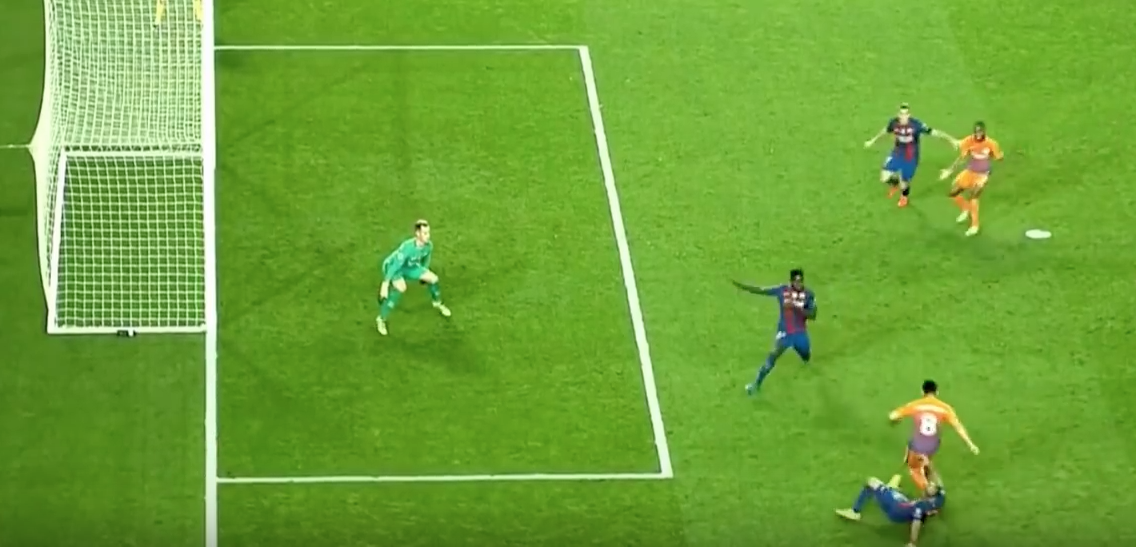Marc-André ter Stegen’s crucial and simple-looking save in the 38th minute was actually very complex

Yesterday’s Champions League group game between Manchester City and FC Barcelona will be remembered for Claudio Bravo’s gaff, but I want to draw your attention to a key play made by the goalkeeper at the other end. Barcelona’s Marc-André ter Stegen’s gorgeous save on İlkay Gündoğan in the 38th minute kept the score at 1–0 and forced City to continue to chase.
Gündoğan intercepted a Barcelona pass in Barça’s half and maneuvered his way into the opponent’s box while dicing a few defenders in the process. Gündoğan immediately found himself staring down Ter Stegen while under pressure from two Barcelona defenders who were scrambling to block his shot. Before the defenders could close him down, Gündoğan managed to place his shot toward the back post only for it to be saved by Ter Stegen’s left hand.
https://www.youtube.com/watch?v=QCINsng4EKw
Ter Stegen did everything correctly here, including reading the situation and reacting quickly with a strong leg push to his left in order to make the save. But even before his reaction, there is one factor above all others that allows him to make the save, and it is a very basic goalkeeper trait: his set position.
The set position is one of the first things you learn as young goalkeeper, and yet getting it wrong is still one of the main reasons goalkeepers at the professional level fail to make saves. In game situations it can sometimes be difficult to read what the attacker is going to do and thus to decide where and how to plant your feet. For example, when you are rushing out to close down a striker, sometimes you anticipate that he will dribble, then shoot mid-stride. Simply put, if you aren’t set for the shot, or if you set yourself late, you will never make the save, and everything else you do becomes irrelevant.
In this situation, Ter Stegen focuses on maintaining contact with the ground. This is crucial. If he’s shifting his feet, there will be a split second when he’s not touching the ground and therefore cannot push off of it when he decides to jump. This may seem very simple, and in theory it is, but when you have a player running toward you with the ball at his feet, it can be tough to remember. You’re evaluating the striker’s pace, the distance of the ball from his foot, his angle of approach, the locations and trajectories of your defenders and opponents making runs, and of course your own location with respect to the goal. Is his head down? Is he looking to shoot or is he surveying the space in front of him? Can I close him down? Will one of my defenders get to him first?
https://www.whatahowler.com/the-play-podcast-a85e5e47ade6
Here, Ter Stegen determines in a split second that Gündoğan is dribbling with pace, with the ball at his foot, with his head down, and with two defenders closing in on him. All of this information tells him that Gündoğan is committed to shooting and that he needs to be set and ready for the shot.
The defenders are important because their position in the play determines the position the goalkeeper takes. If your defender is blocking the near post, then you as the goalkeeper know it is your responsibility to block the back post. But sometimes — and it happens in this case — your defenders are running and sliding at full speed to block the striker’s shot — usually to make up for being beaten or being out of position — and so it’s up to the goalkeeper alone to cover as much of the goal as possible. This makes it dangerous to cheat in any direction; you don’t know where the shot will be headed. If you cheat anyway, you’re leaving the save up to chance and giving control of the situation to the striker. This is bad. So you want to be set, with your feet in contact with the ground, as Ter Stegen does here, so you can quickly react in either direction to make the save.
The second thing I notice about Ter Stegen in this frame is his body shape. The ideal shape you want as a goalkeeper is what my youth goalkeeper coach used to call the gorilla position: on your toes, leaning slightly forward, a small bend in your knees, feet a little more than shoulder width apart, and hands down at your sides.

For goalkeepers this is the ideal position that allows you to react quickly to any shot . If you’re on your heels, you will be leaning or falling backward when you dive and less able to parry a powerful shot. Stand too upright and it will be tough to get down quickly to defend a shot hit low to your sides. Crouch too low, with a large bend in your knees, and it can be difficult for you to generate enough power to explode quickly and reach a shot in the top half of the goal. Getting his exactly right, in the moment, while thinking about all the variables unfolding on the field before you, is hard.
From the gorilla position, Ter Stegen has to be patient and wait for the striker to take his chance. As you can see in the video, he is taking very, very small jumps as he waits for the shot. This is called bounding. It keeps your muscles activated and ready to pounce while also ensuring that your feet stay in almost constant contact with the ground. Bounding is the goalkeeper equivalent of being on your toes.
Once Gündoğan shoots, Ter Stegen reads the shot, sees it is going to the back post, and explodes to his left to make a spectacular save—one that displays what I would call difficult simplicity. In theory, this save is easy: you get set, stay in your ready position, and then react. But when the game is moving a million miles per hour and there are so many variables that you have to process in a very short amount of time, something that appears so simple is actually extremely difficult.

